An upper class German woman’s gown from the early 16th century, in green silk and hand-printed ‘brocade’.
After making a couple of Cranach-style gowns in red velvet and black velvet, I wanted something from the same time period, but with a different style of bodice and sleeves – and something other than velvet.
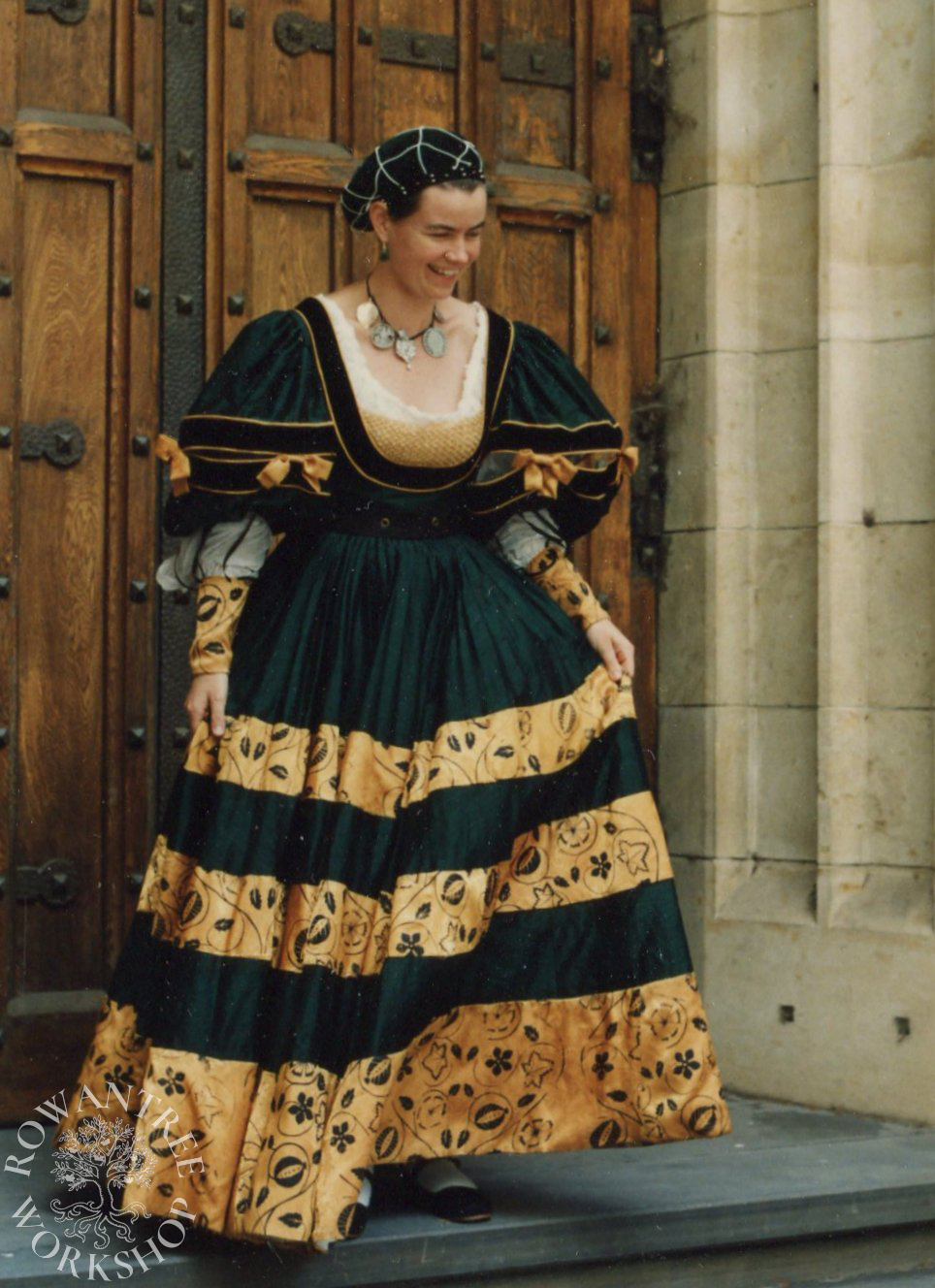
Research and Design
The inspiration for this gown came from a picture in Braun & Schneider (1975) depicting two women from the ‘first third of the 16th century’. Although this book was clearly a collection of Victorian re-drawings, it was one of the few costume resources available in 1990!
I combined elements of the two drawings: from the first image, I took the deep guardings and scoop bodice (also seen in some of Dürer’s woodcuts). From the second I took the big sleeves – and found a similar pair illustrated in a painting by Hans Holbein, although worn by a boy.
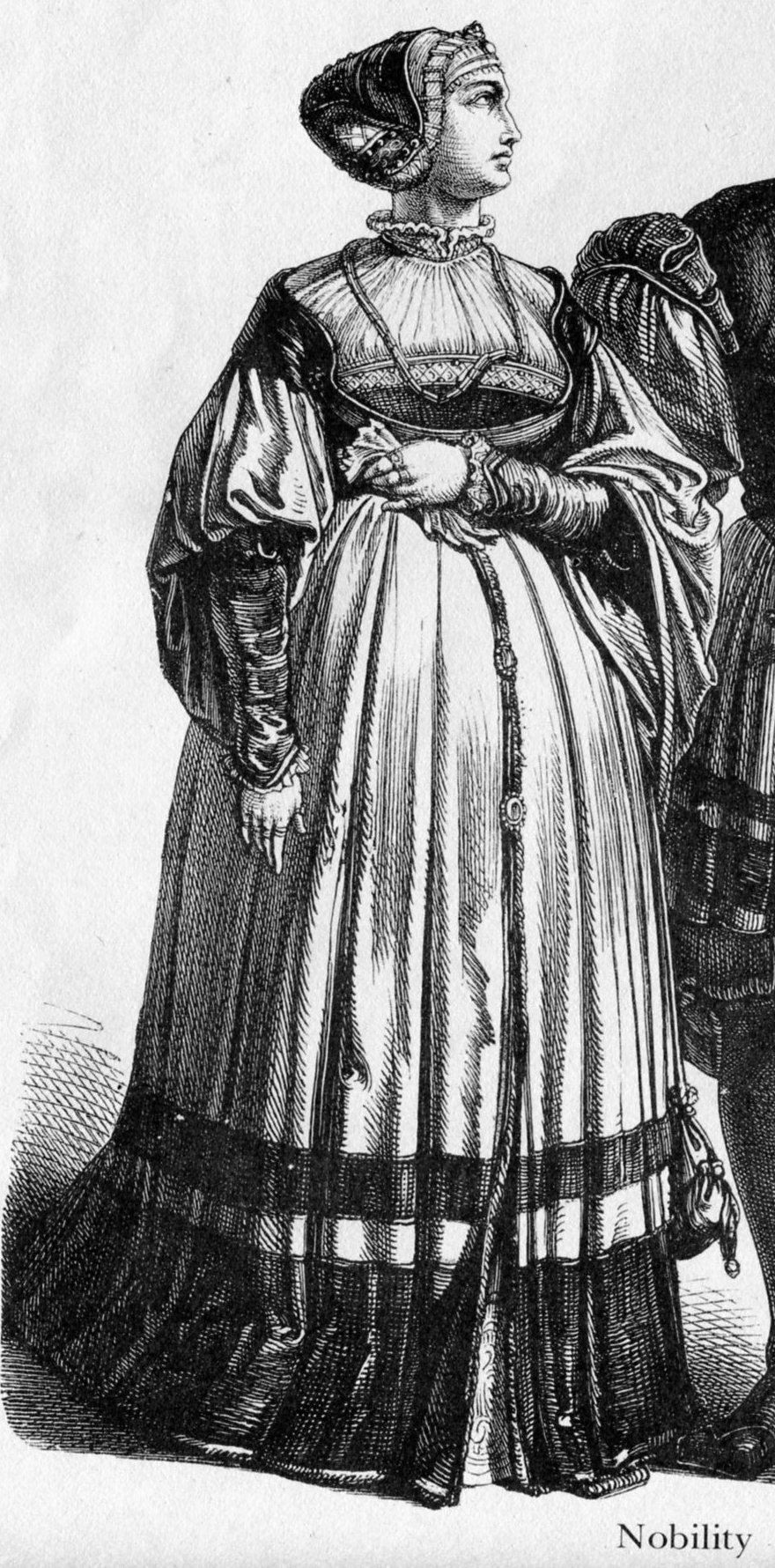
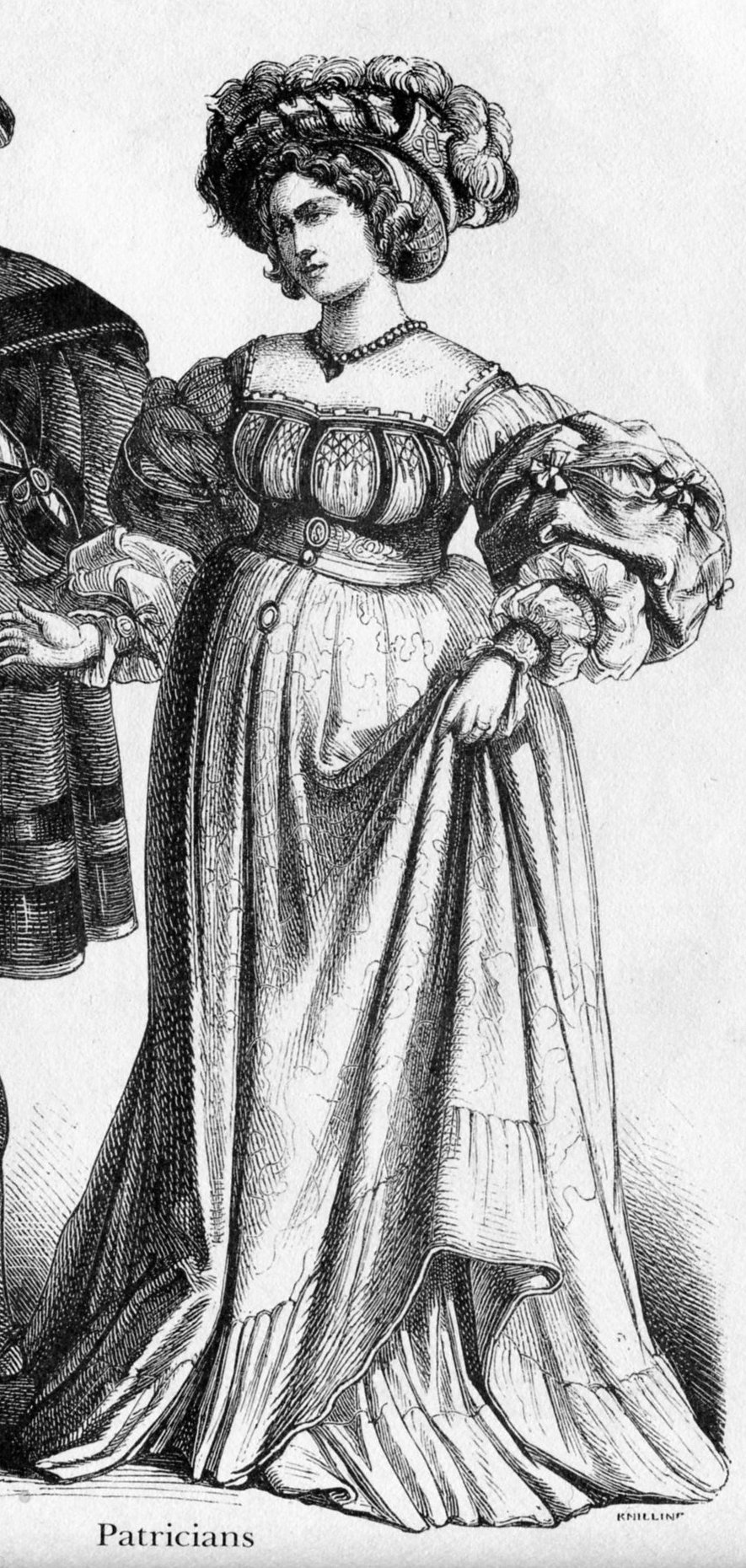

Source: Wikipedia
Construction
I drafted a new bodice design, with side lacing and tested it out. The sleeve pattern took a few tries – it was so much larger than I expected to get the right effect!
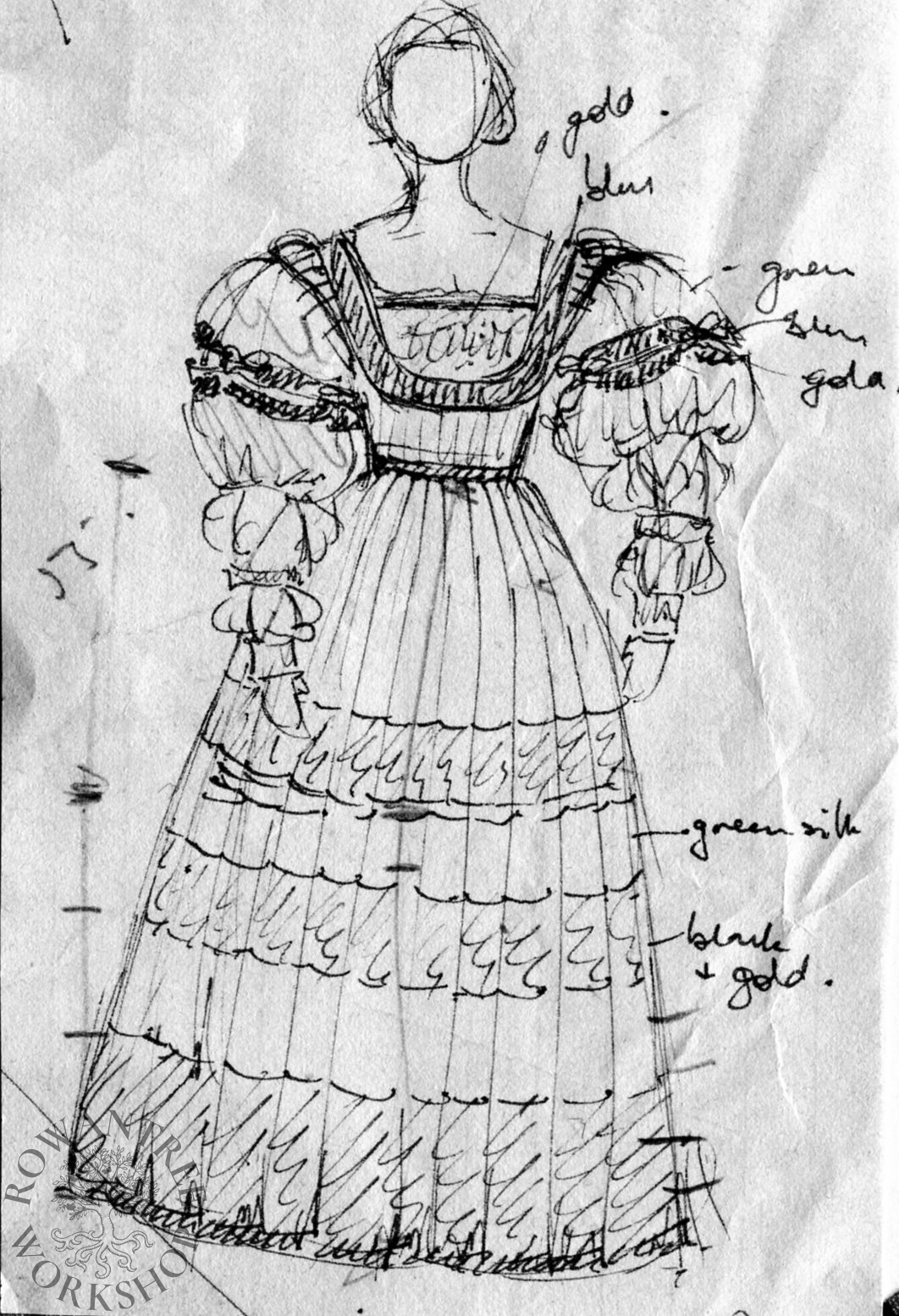
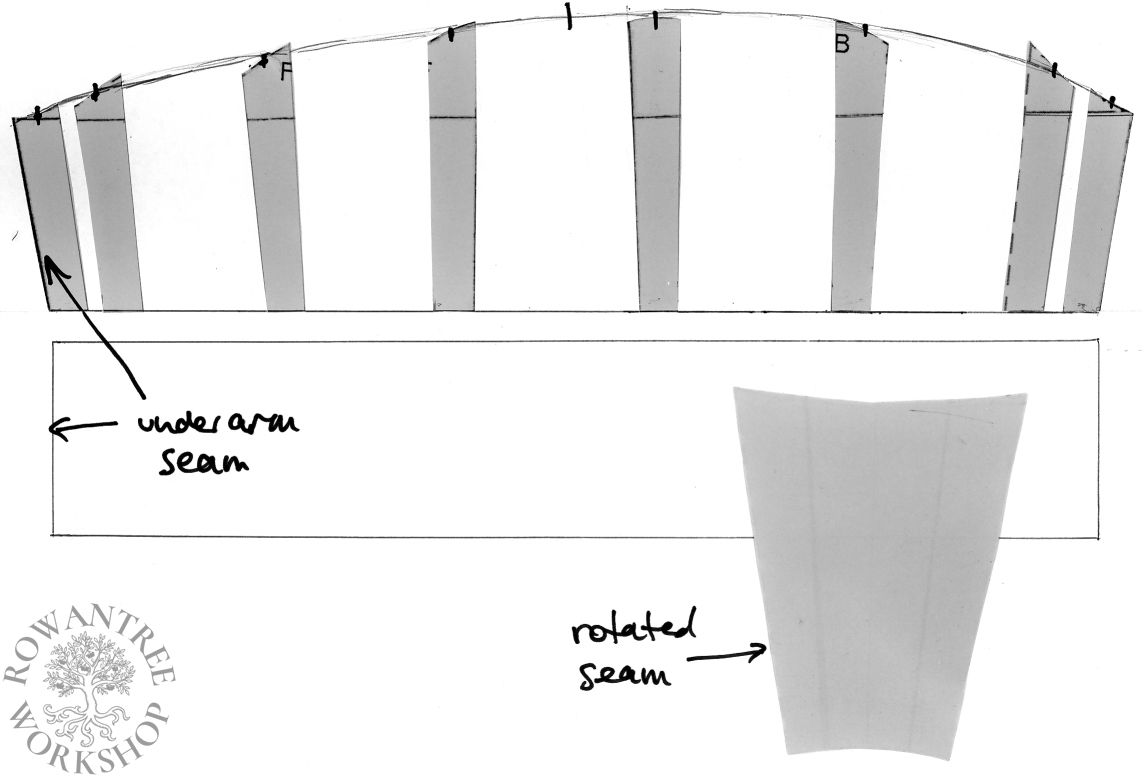
I bought some lovely green silk on massive special, and my friend Marguerite gave me some beautiful wide gold braid for the Brustfleck, but I had no luck finding a suitable brocade in the local fabric shops.
Eventually I decided to make a ‘brocade’ using silk screening. I made up a design which evoked the feel of 16th century artworks, together with my cinquefoil. With the help of friends, I silk-screened many meters of imitation gold satin brocade for the bodice and skirt guards.

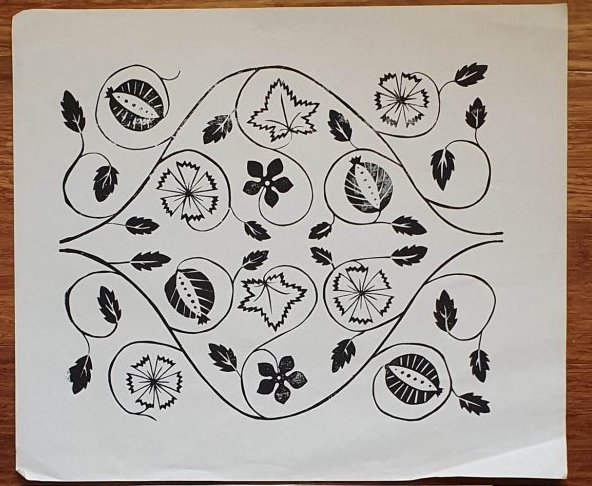
The skirt is cut as a semicircle, made of 6 arced strips. I sewed these together and lined the skirt in cotton sheeting to add weight and volume to the silk.
The weight of the fabric and velvet ribbon trim meant the sleeves sagged, so I added a ring of plastic boning inside the top hem, which worked well enough.
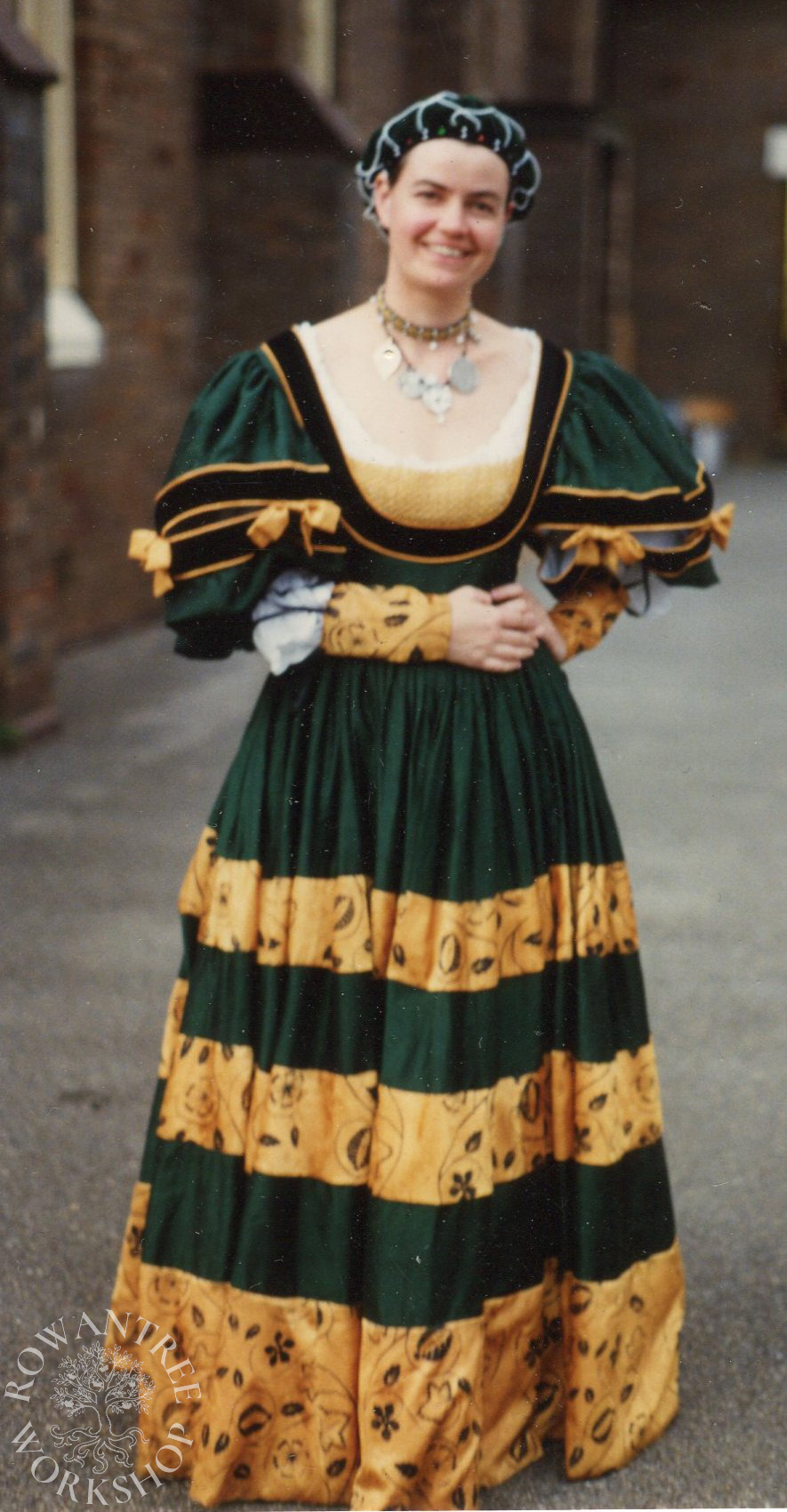

Since we wanted to look like a matched set, I used the remaining fabric to make Elffin a matching tunic (his upper limit for fancy at that time). A year later, my friend Ysabeau asked if I could make a version of this dress for her wedding in her colours – red, black and silver.
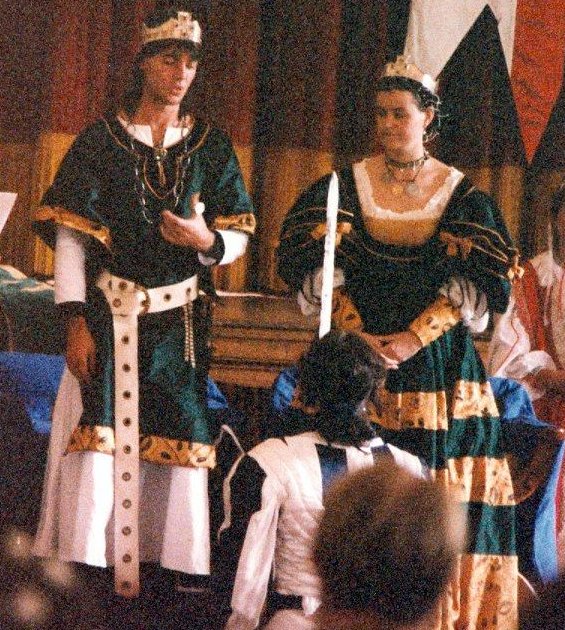
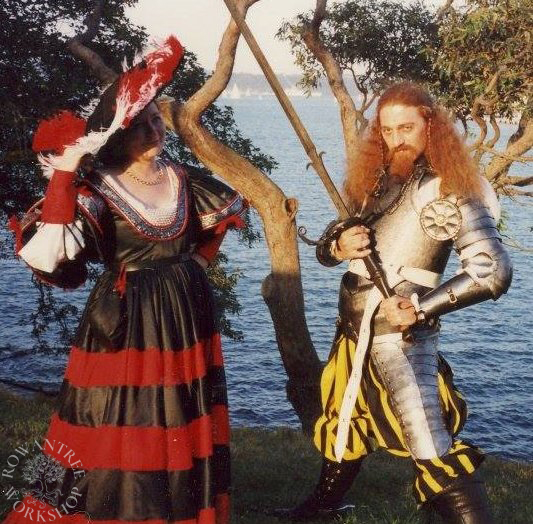
Afterthoughts
Printed cloth was definitely known in the Renaissance (Cennini details the process using pigments ground with linseed oil), but the extant examples and contemporary references indicate that such cloths were used for furnishings and children’s clothes, not high end gowns!
Nevertheless, I think it’s a useful technique for making decorated fabrics we cannot otherwise get.

